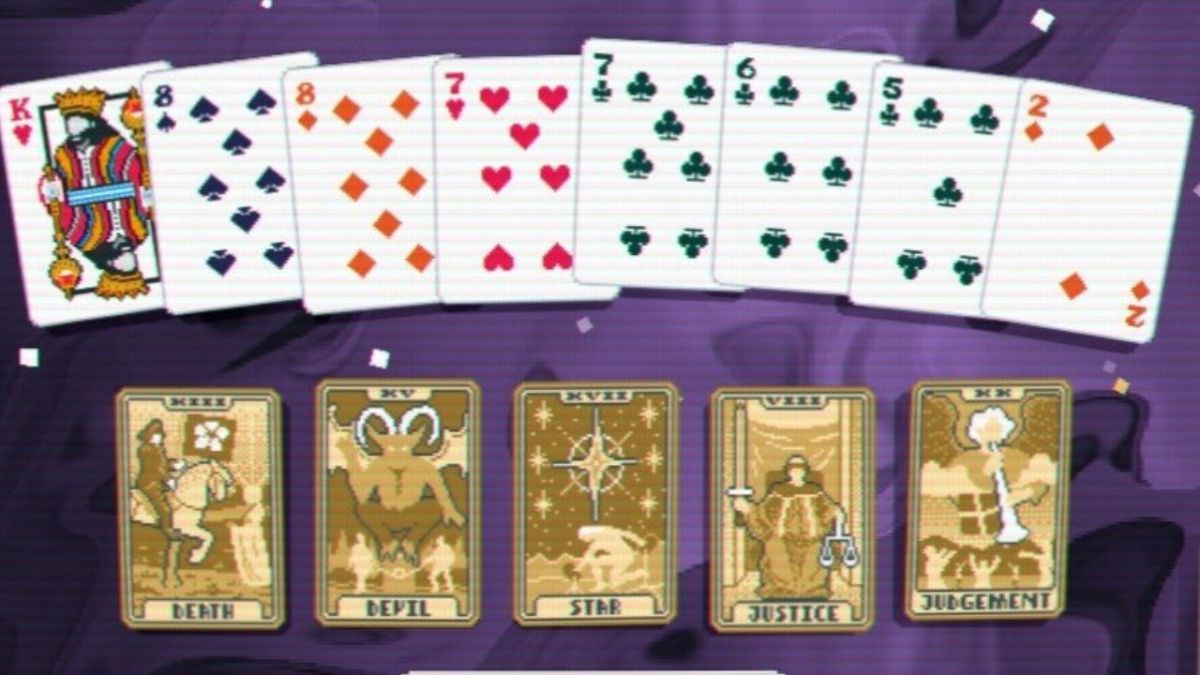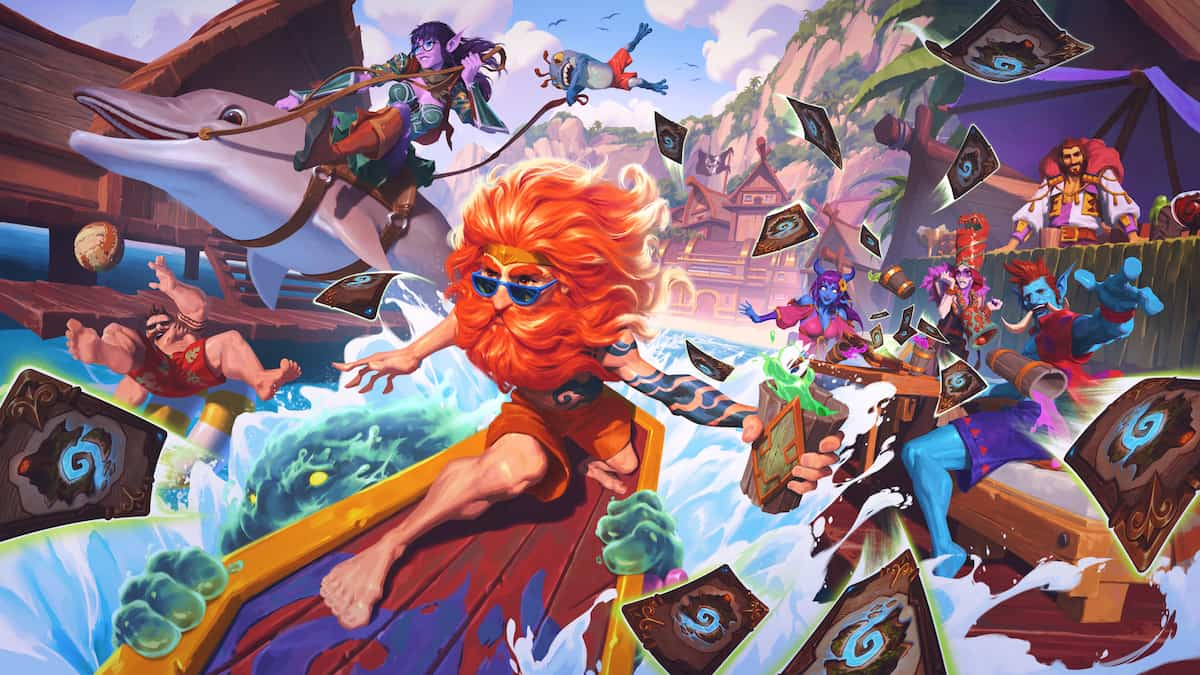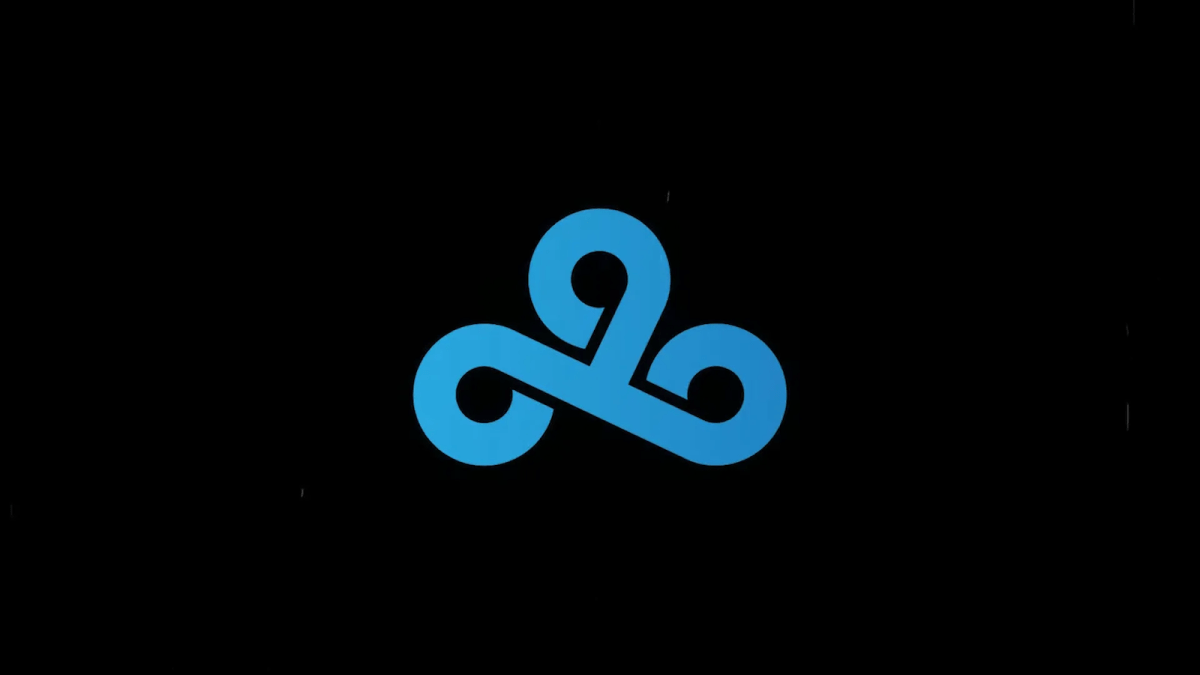Introduction
Another trip to the Valeera well. Last week we broke down a Fal’dorei Miracle deck that utilized a ton of the classic draw cards to create near-infinite spiders. This week, we’re going back to one of my favorite cards in the game, Kingsbane, to check out a legend Control Rogue deck. The words control and Rogue have not typically gone together in the past, but they do a nice job of melding in this one. Kingsbane as a tool is quite good against slower decks (especially with the overall lack of weapon removal in the current game) and the rest of the list is a perfect blend of healing and removal. It is all about staying alive in the current meta, and this list does that extremely well.
Key Cards
Kingsbane
Going back to one of the coolest cards in the game, Kingsbane is a powerful finisher for this deck. However, unlike the last time we teamed up with the weapon, it is not the focus of this build. In mill decks your goal is to dig as fast as you can in order to get to Bane, and then buff it as much as possible. Here, you are still going to buff it with the goal of killing your opponent, but the way you go about that is a bit different. You want games to go long with this deck. You want your opponent to slowly run out of resources as you chip them down turn after turn after turn. For that reason, this card should be used in the same way as Frost Lich Jaina. That is to say, use it to control the board until your opponent is out of steam. Then you start going face.
A big part of using Kingsbane is conserving it. The x/3 weapon does a lot of work and is going to be a strong engine once you get it going. For that reason, getting rid of it with no way of pulling it back can lead to a situation where you have a lot of strong cards and no way to trigger them. Of course, you can always lean on other control tools, but losing that key weapon swing (as removal or damage) each turn really hurts. For that reason, always try to lean on Doomerang when possible. Being able to keep Kingsbane and kill something is invaluable in a deck like this one. Cavern Shinyfinder is also amazing in this regard. However, you’re typically going to use on to first get your weapon. You only want to use the second one once you’re completely out of other options. Also, it is best to play the Shinyfinder as soon as you break the weapon to prevent yourself from accidentally drawing it next turn.
Plated Beetle
While it may not seem like a big deal, Plated Beetle is a fantastic card for this build. Not only does it help trigger Lesser Onyx Spellstone (which we’ll get to later on), but the early board presence and healing is exactly what a Control Rogue list needs. Beetle is a great control card that I expect to see more and more play as the meta move into rotation. As Arcanologist proved, a two mana 2/3 is very good in the current meta. Not only do most decks heavily lean on one health minions (*cough* Patches the Pirate *cough*) to lock down early tempo, but there are not many ways to deal three damage right away. Most of the time this card is going to two-for-one hyper aggressive decks, and then when it does, you also get three armor. Being able to play a control deck means being able to survive through the early game. Though not every long game is going to go your way, you’re going to struggle the most against things like Hunter, Paladin, and Aggro Druid. For that reason, you want something that will help you hedge your bets without taking away anything against slower decks. Beetle is perfect for that. It can push to an extra removal spell when you have Spellstone in hand, and it is always going to be health, no matter what you’re up against.
Blade Flurry
Unlike other Kingsbane Rogue decks, this one does not run Vanish. Though that might seem like an odd choice, you have other options when it comes to clearing. Instead of putting things back in someone’s hand, this deck is all about killing everything your opponent puts down (as touched on below). While that plan is inherently weaker against swarm cards, it is generally solid against most all-in tempo decks like Rogue and Big Spell Priest. Even so, there are still going to be games where your opponent floods. For that, you have Blade Flurry. This spell is not one that has seen any play since it got nerfed, but it works very well with Kingsbane. Typically, you want to get five damage off of it, but even at three it can do quite a bit of work. It is easy to try to bring your weapon up to seven or nine health in order to get a gigantic clear, but you don’t have to work that hard. You have a lot of spot removal, this is just another way to take down the smaller threats.
Conserve this card until the last possible second. Blade Flurry is your only full clear in this deck, and using it at the wrong time can quickly lead to a loss. Unless you are playing Razakus Priest (which has barely any threats) this card is always going to get value. It is strong against Voidwalkers, it is great against aggro, and it ruins tempo builds. Many people will play around Vanish, but almost nobody is going to be see Flurry coming. When playing to the four mana spell you want to liberally use your spot removal to protect your health. That will then get your opponent to flood in order to add pressure. They won’t worry about going wide because they think you’re just going to put their minions back into their hand. When you remove them, they will have nothing left. Just note, you should plan a way to get Kingsbane back once you use flurry. It is easy to forget that this breaks your weapon (especially after playing with Doomerang).
Removal
An interesting choice in this deck is that you only run one copy of Leeching Poison. The reason that is important to note is because your goal in this deck is not to gain life in that way or even to send things back to the hand. It’s to kill just about every single minion your opponent plays. Removal as a control tool is something that has slipped away from many slower builds over the past year, but it is on full display here. Eviscerate, Shadow Strike, Blade Flurry, Backstab, Fan of Knives, and Lesser Onyx Spellstone are all ways to make sure your opponent’s minions never live long enough to take you down. Those cards are vital to your plan because they help you stay alive while you set up your finishers or weapon combos. Removal should always be your first option with this list. Don’t try too hard to push out threats or get board presence. That comes second here.
Your removal is going to be the backbone of your deck, and it is how you are going to pace each game. You get that through various means, including trading, spells, or weapon hits. Kingsbane is incredibly powerful when it comes to clearing the board and you want to use it as your prime source of removal (especially if you have Doomerang or Leeching Poison). From there, you want to lean on your spot removal next. Getting your opponents to play into AOE is going to be important, but to set that up you have to make them think that they need a lot of threats to break through. Be aggressive with your removal, but don’t be foolish. It is easy to pull the trigger too early. Always look at a threat and figure out how much damage you can allow it to do. If it is going to get in three or more times, it needs to die right away. If you can survive a hit or two, then wait it out.
Lesser Onyx Spellstone
The heavy hitter in this build, Lesser Onyx Spellstone is a very powerful, if not slow, card. The five mana spell is rather weak in its non-upgraded form. Killing one random minion is pretty bad (worse than Assassinate), especially when you’re up against tempo decks that can pump out minions. However, hitting two or three is much, much stronger. In fact, hitting three bodies is almost always going to be a hard board wipe in the current meta. Your goal with this card is to catch two or three threats to significantly set your opponent back. There are many ways to do that, but getting your opponent to run out two big threats after using other removal is a great way to make sure that the removal depletes their hand. Using this as a one-for-one, or on one big threat and a small body is fine as well, but you have enough other removal options to go for the gold here.
You want to treat the five mana spell as your trump card. Lesser Onyx Spellstone is extremely powerful when fully upgraded. In fact, it is so strong that you typically only want to use it as a way to conserve other cards. That means pulling the trigger when your opponent has three strong threats in order to save individual removal. A big part of playing this deck is reading the different removal options in your hand, and then running them out according to what your opponent might have. If you think they’re out of big options, then taking out a mediocre board can be ok. Also, be patient. As with Blade Flurry, this is a spell that nobody is going to play around. People often stick two bodies (Bonemare/minion, Cobalt Scalebane/minion, etc.) in order to dodge AOE, and you can punish those extremely hard if you’re ready for them.
Deck Code
AAECAYO6Agi0AfYE7Q WoCIYJqc0CgNMCu+8CC/sBywObBYgHsq0Cqa8C sc4C5dEC2+MC6uYC2OkCAA==
Matchups
The four decks I see the most while playing the ladder.
Priest
Razakus Priest is not going to be an easy game here. While you do have Kingsbane (which always does work against the one-of build) you also have the problem that your deck doesn’t run as much draw as the mill versions. That leaves you exposed to combo decks, especially ones that can go off as early as turn eight. As soon as you can identify your opponent as Razakus (typically by the lack of a one and two drop) you need to go all-in on your weapon. Get to bane and then start buffing it as much as possible. Cards like Southsea Squidface are particularly strong in this battle because Priest has no way to answer them except through AOE. They clear, you buff your weapon, and then hit them in the face. Do everything you can to keep your Kingsbane and tempo as hard as possible. If you don’t get to your opponent before turns eight through ten, the game is usually over.
While the above matchup is tricky, a good reason to try this deck is because of how well it stacks up against Big-Spell Priest. Everyone knows the power the midrange deck can pump out. However, as the name so aptly suggests, it also mainly consists of minions. That makes your removal extremely strong, especially once your get your Kingsbane going. Your goal when fighting Big Spell is to use as much removal as you can. They want to flood the board with giant threats in order to overwhelm you, and you need to push them back at all costs. The way you win this game is by being greedy with your removal. Save your big Blade Flurries or upgraded Lesser Onyx Spellstones for your opponent’s Spiteful Summoners and Free From Ambers and then chip down every other midrange threat. It can be easy to get antsy when pacing this one, but know that Big Spell, as strong as it is, has very little burst.
Control Warlock
As strange as it may sound, this is a matchup where you want to be the aggressor. Your deck is built to slowly grind out minion-based decks and then kill them with your gigantic weapon. That does not work well against Warlock because things like Voidlord or Bloodreaver Gul’danthat nearly blank your removal. To get around that, you want to build a gigantic Blade Flurry (or Valeera the Hollow with an upgraded Lesser Onyx Spellstone) if you feel the game going long. This is essential because if you don’t have a strong AOE clear you will instantly lose to the Death Knight. Your goal is, as with Razakus, to build a huge dagger and use it to hit your opponent in the face every single turn. Mulligan for anything that works toward that end and throw back everything else.
Another reason you need to get going in this game is because you are on a clock. The winds have shifted, and almost all Warlocks on the ladder have embraced the cube combo. While you have healing, it is not going to be easy to take down a near-endless stream of Doomguards. This is the other reason pressure is so important in this game. It is easy to get comfortable when your opponent does nothing but tap during the first two or three turns, but you have to remember that each tap just brings them closer to a huge burst turn. Leverage all of your threats, and do everything in your power to make your opponent feel like they are on the back foot. That will cause them to use resources, which then limits both their draw and combo potential.
Tempo Rogue
Moving on up to third place, Tempo Rogue continues to rise across all parts of the ladder. The fast deck has gotten even stronger in the past month, and it will likely rise more and more as we move closer to rotation. The deck is incredibly consistent and does what it has always done: pump out minions. That creates problems for a lot of lists, but, as with the Big-Spell Priest matchup, it works out nicely for you. You want to pace this matchup in the same way you do when playing any minion-based Anduin deck. That is to say, aggressively clear early on. This will stop your opponent from chaining their minions together or building off of interactions. Once you get a handle on things, you can then slow down and do your best to catch their larger threats in AOE.
The most important thing for you in this matchup is watching out for burst damage. Leeroy Jenkins is not incredibly popular, but he does see play. Some lists even run double Cold Blood. Knowing that is important because, in order to properly set up your removal, you are going to need to take hits. For example, if your opponent has a threat against an upgraded Lesser Onyx Spellstone on turn six, you are going to want to let your opponent get off a Bonemare in order to maximize your removal value. However, that of course means taking a sizeable chunk of damage in the process. Always compare your health to your opponent’s damage potential. If they can kill you with burst, be careful with removal. If you have some leeway, be patient and get them to commit.
Aggro Paladin
Finally, we are going to hit on the trickiest matchups. It is no secret that hyper aggressive decks are a problem for Rogue. However, as we covered above, this list is specifically built in order to counter that aggression. Even so, there is no doubt that Paladin can sneak up on or overrun you given the chance. You have to clear aggressively in this one, and save all of your AOE to counter things like Call to Arms. Your health is extremely important, especially because you have no way to stop charge from things like Southsea Deckhand or Leeroy Jenkins. If you see your opponent making a push, think about their outs and how to get your health above them. You just need to clear, clear, and clear some more. While it is not vital, do your best to play around Divine Favor. This usually isn’t a huge issue for control decks, but since your goal is to chip your opponent down turn after turn, it can be problematic to give your opponent gas.
Mulligan Guide
The goal of this deck is to get your early drops in order to build up to your engine. Backstab, Kingsbane, Loot Hoarder, and Plated Beetle are your four must keeps. Deadly Poison is strong any time you have bane, and you should always keep Cavern Shinyfinder when you don’t have the weapon. Bloodmage Thalnos is great when you have early spells or when you need a good draw. Eviscerate is good against aggro, as is Leeching Poison when you have bane. Fan of Knives and Shadow Strike are good against tempo or fast decks, and Elven Minstrel and Southsea Squidface are both great on curve.
Conclusion
We don’t always cover Control Rogue on this series, but when we do we run Kingsbane. This is a very cool deck that takes a shot at aiming to eliminate some of the biggest problems Kingsbane Rogue has. You guys know I love the Rogue legendary weapon, and you also know that I absolutely love it when try to fix any big issues. I love Mill Kingsbane, but I might say this version may be even better. If you want something completely different and completely new, give this one a shot.





Published: Feb 5, 2018 09:05 am